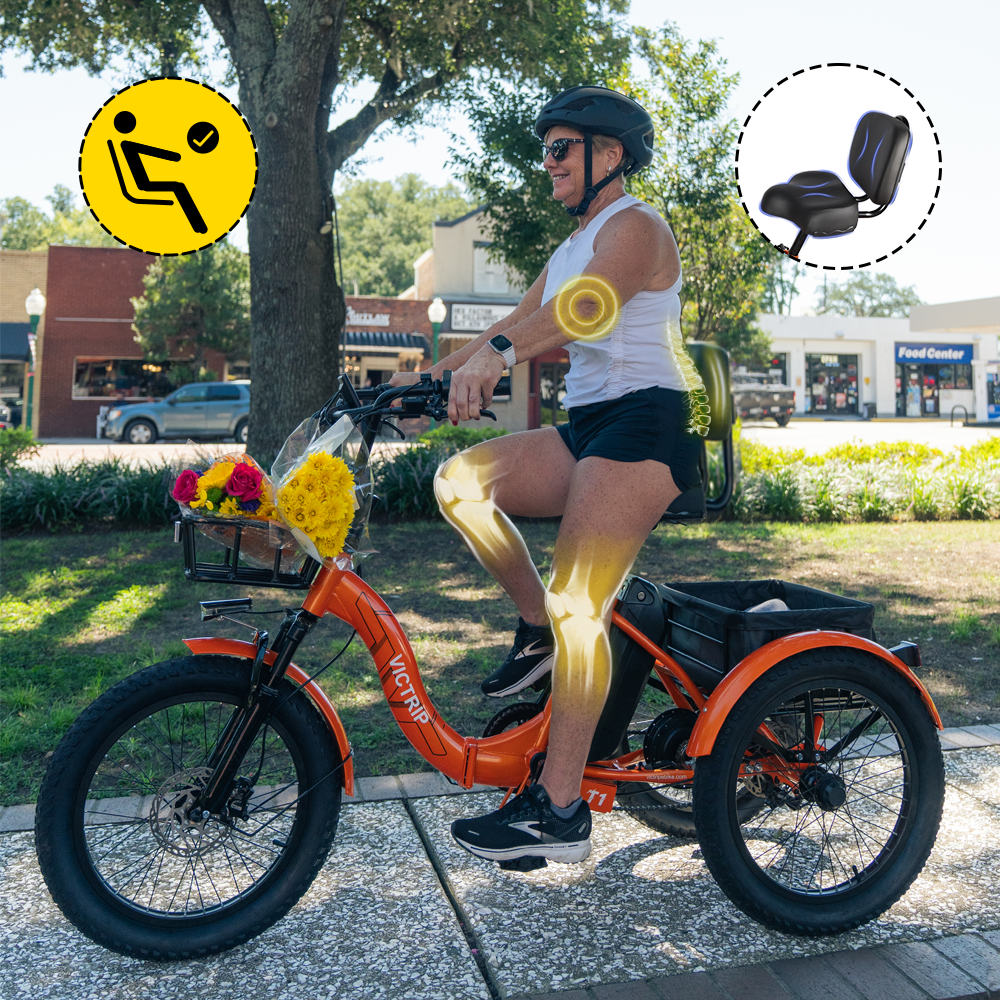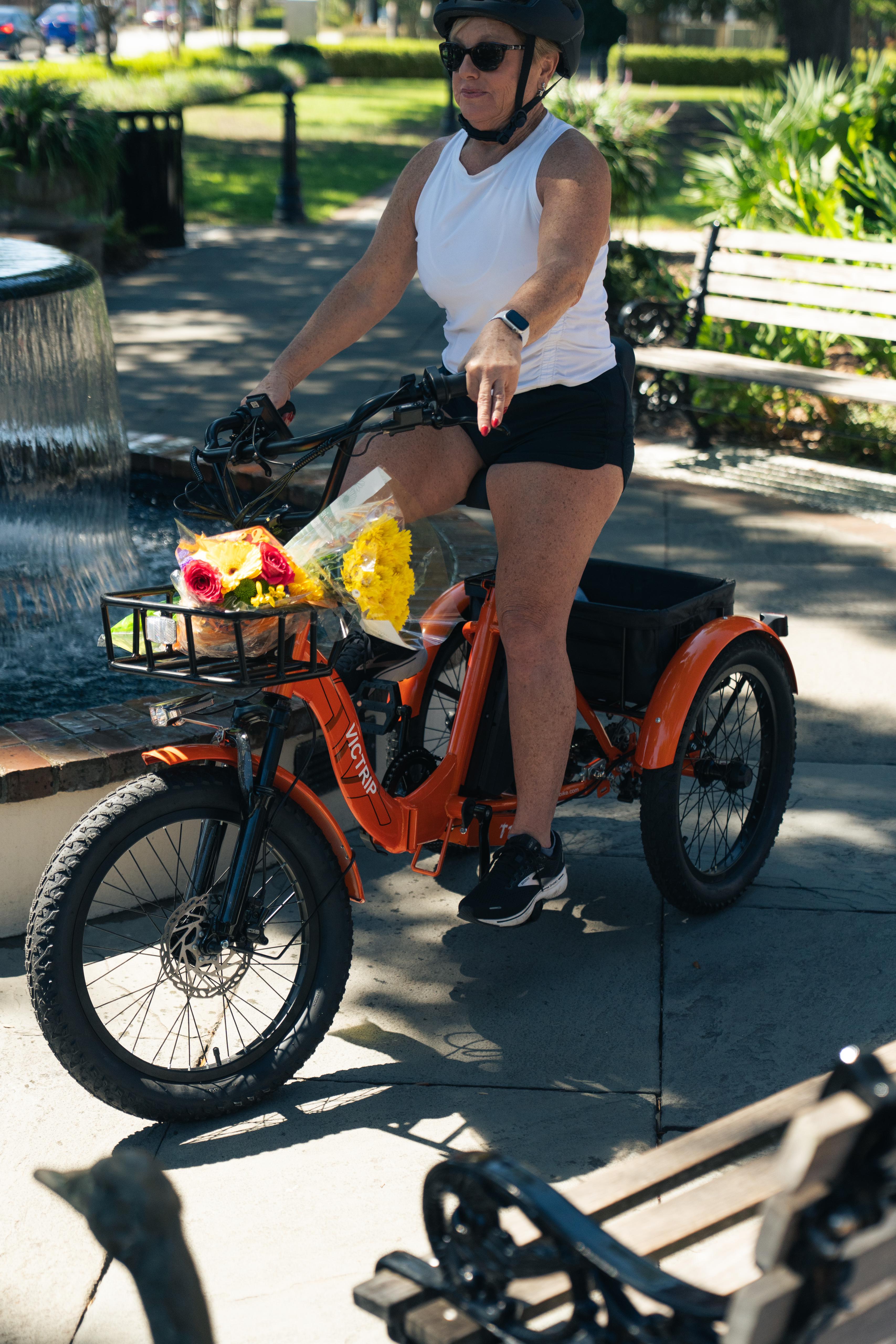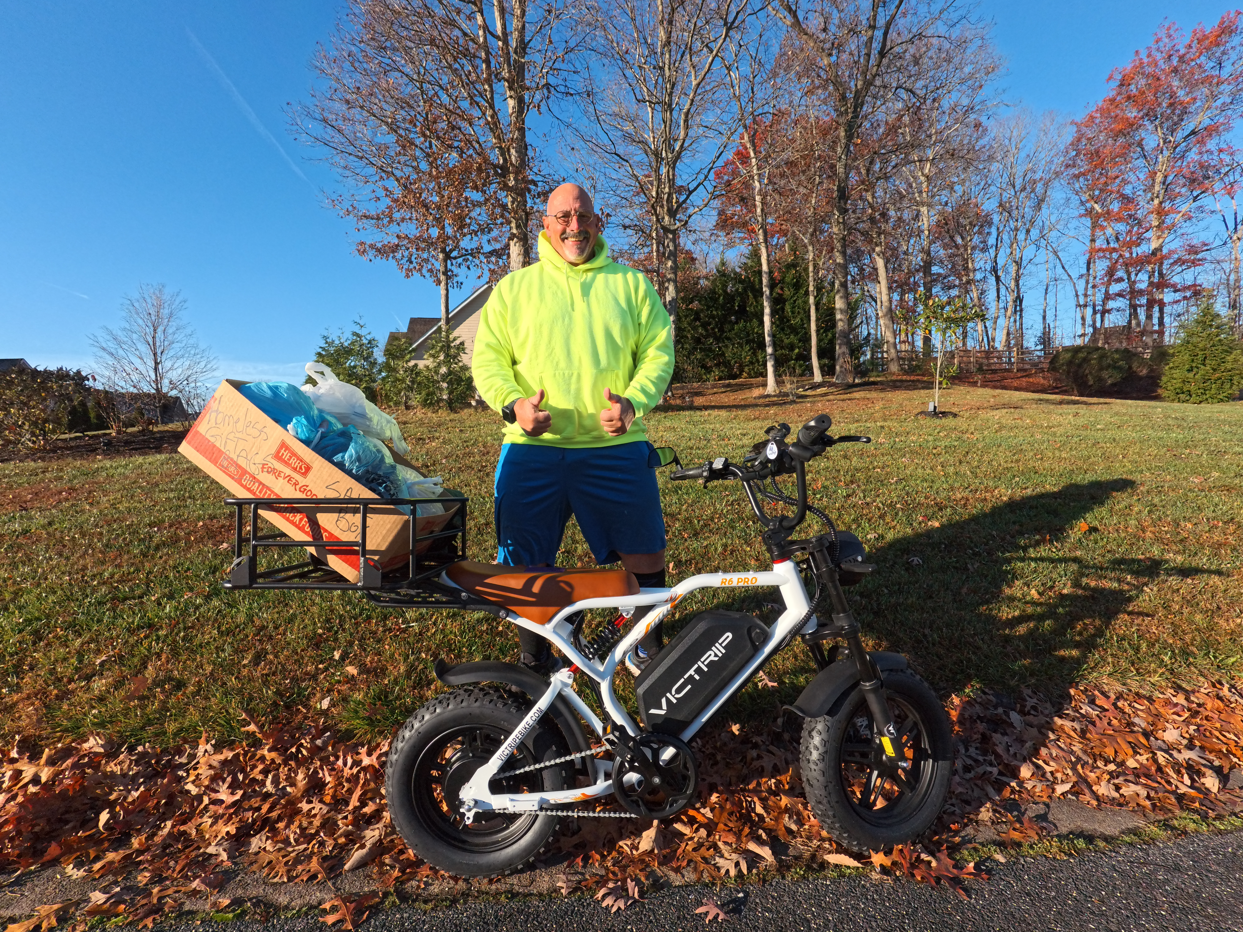
If you're shopping for an electric cycle for woman — whether it's for commuting, errands, or leisure — this guide walks you through everything: what makes an e-bike suited to women's needs, the features that matter most, real-world buying advice, care tips, and seven carefully chosen categories of e-bikes that fit common use-cases. Read on to make a confident, well-informed choice.
Why Choose an Electric Cycle for Woman?
Electric cycles have reshaped how people commute, exercise, and travel short distances. For many women, a well-chosen electric cycle for woman offers:
-
Easier starts and climbs thanks to pedal-assist motors.
-
Greater independence (longer distances without sweat).
-
Better cargo and errands capability for busy days.
-
Lower stress on joints compared with pure cycling.
-
Options tailored to comfort: step-through frames, upright geometry, and ergonomic grips.
You’ll want an e-bike that balances comfort and style without compromising performance — and that’s what this guide is built to help you find.
What is an electric cycle for woman?
An electric cycle for woman is essentially an e-bike designed or configured with features that tend to suit many female riders’ ergonomic and lifestyle preferences: lower standover height, shorter reach, lighter frames, and aesthetic choices. That said, “for woman” doesn't mean limited — it's about fit, comfort, and choice. Variants include:
-
Step-through city e-bikes: easy mounting/dismounting.
-
Commuter/urban e-bikes: practical features like racks and fenders.
-
Lightweight folding e-bikes: for mixed-mode commuting.
-
Cargo e-bikes: for carrying kids or groceries.
-
Performance e-bikes: for fitness rides with assistance.
Designers increasingly focus on adjustable components (saddles, stems, handlebars) so a wide range of body types can achieve a comfortable fit.
Key features to prioritize
Choosing the right electric cycle for woman means looking beyond looks. Prioritize these technical and comfort features:
Motor power and type
-
Mid-drive motors offer balanced handling and efficient hill-climbing.
-
Hub motors are simple and solid for city commuting.
-
Typical nominal power ranges: 250W–750W depending on region and use-case.
Battery capacity and range
-
Battery capacity measured in Wh (watt-hours). 400–700 Wh is common for daily commuting or longer rides.
-
Consider real-world range: rider weight, terrain, level of assistance, and cargo affect range.
-
Look for removable batteries for easy charging.
Frame geometry and step-through design
-
Step-through frames reduce standover height — excellent for skirts, dresses, or limited mobility.
-
Reach and handlebar height determine an upright, comfortable posture.

Braking and safety
-
Hydraulic disc brakes provide consistent stopping power — especially important on heavier e-bikes.
-
Integrated lights, reflectors, and robust tires improve safety.
Comfort & accessories
-
Suspension seatposts or front forks soften rough roads.
-
Pannier racks, fenders, and kickstands increase practicality.
-
Adjustable saddles and ergonomic grips reduce fatigue.
Step-through vs. diamond frame
Step-through frames make mounting easier and are often marketed to women due to their convenience and modesty benefits. Diamond frames (traditional) can be stiffer and lighter, but the choice should be driven by comfort, not stereotype. Try both before you buy.
Motor types and placement
-
Hub drive (rear or front): quiet, lower maintenance, good for straight-line commuting.
-
Mid-drive: better for varied terrain, easier to service drivetrain, often more efficient on hills.
Battery capacity and range planning
Estimate range with a cushion: if you need 30 miles round-trip, aim for a battery with at least ~400–600 Wh depending on conditions. Remember, battery health declines over years — plan for a bit of buffer.
Comfort, fit and sizing
A comfortable electric cycle for woman prioritizes fit:
-
Saddle shape and width: get measured or try different saddles; many specialist shops let you test.
-
Handlebar height & sweep: more upright bars reduce back strain.
-
Crank length & pedal position: influence knee comfort — smaller riders may prefer shorter cranks.
-
Standover height: crucial for step-through choices.

Safety & braking systems
Weight and speed of Folding e-bikes make braking essential. Choose hydraulic disc brakes where possible. Consider tire size and tread: wider tires add stability and comfort. Integrated daytime running lights, reflective tape, and a bell are must-haves for urban riding.
Use-cases: commuting, city, trekking, cargo
Different rides need different bikes:
-
Commuting (short, paved): lightweight step-through, 250–400 Wh battery, hub motor.
-
City/errands: robust racks, fenders, integrated locks.
-
Trekking/longer rides: mid-drive motor, 500–700 Wh battery, wider tires.
-
Cargo/family: reinforced frame, long-tail or front cargo platform, torque-heavy motors.
Understanding your primary use-case narrows choices fast. For riders who want something versatile, the VICTRIP R6 is a great example of a commuter-friendly e-bike that also handles weekend leisure rides with ease. Its balance of motor power, battery capacity, and comfort-focused design makes it suitable for daily city travel and light trekking.

Top 7 proven picks
Below are seven category-based picks (descriptive — not brand-heavy), representing common needs:
-
Best Urban Step-through (Comfort commuter) — Easy mounting, upright geometry, rack/fender combo.
-
Best Lightweight Folding (City + transit) — Compact, easy to store, adequate range for mixed commutes.
-
Best Mid-drive Trekking (Hills & long rides) — Efficient on hills, better range management.
-
Best Cargo/Family e-bike (Errands & kids) — High payload capacity, robust build.
-
Best Value Commuter (Budget-conscious) — Decent range, reliable components at a lower price point.
-
Best Performance Hybrid (Fitness + assist) — Sportier geometry, efficient assistance for training.
-
Best All-rounder (Balanced features) — Comfortable fit, modular accessories, good warranty/support. A model like the VICTRIP TITAN S embodies this category, offering a step-through design with reliable range and practical accessories that suit both city riders and weekend explorers.
Buying checklist & comparison table
Quick checklist (tick before purchase):
-
Test-ride it with cargo & clothing
-
Confirm battery range for your route
-
Check motor type & legal power limits in your area
-
Verify service network/warranty
-
Inspect brakes, tires, lights, and rack compatibility
| Feature | Why it matters | Recommended |
|---|---|---|
| Frame type | Ease of mounting & comfort | Step-through for easy access |
| Motor | Torque & hill ability | Mid-drive for hilly routes |
| Battery (Wh) | Real-world range | 400+ Wh for commutes |
| Brakes | Safety | Hydraulic disc preferred |
| Accessories | Practicality | Racks, fenders, lights |
Maintenance & long-term ownership tips
-
Keep the battery charged between rides; avoid full depletion frequently.
-
Annual drivetrain check (chain, cassette) extends drivetrain life.
-
Tire pressure and brake-pad checks every month if you ride often.
-
Store battery indoors in extreme temperatures.
Small efforts now mean fewer surprises later.
Legal, insurance & riding etiquette
Rules differ by locale. In many regions, e-bikes under certain power/speed thresholds are treated like bicycles; above that they may be classified differently. Consider:
-
Helmet laws
-
Speed limits for e-bikes
-
Where you can ride (bike lane vs. sidewalk)
-
Insurance options — some homeowners or renters policies may cover e-bike theft; specialized e-bike insurance gives peace of mind.
Check local regulations before buying and riding.
Read More: Foldable Electric Bike Laws and Regulations by State (USA).
Cost, value & financing options
Typical price tiers:
-
Entry-level: $800–$1,500
-
Mid-range: $1,500–$3,000
-
Premium: $3,000+
Consider total cost of ownership: battery replacement after several years, maintenance, accessories. Many retailers offer financing or leasing options; some cities provide rebates for e-bike purchases (check local incentives).
Environmental & health benefits
Riding an electric cycle for woman reduces short car trips, lowering emissions and traffic congestion. Electrically assisted rides still provide cardiovascular benefits — you can choose assistance levels that let you sweat a little or cruise comfortably.
Conclusion
An electric cycle for woman should harmonize comfort, capability, and confidence. Start by defining your primary use-case, test a few frame types (don’t assume the “women’s” label is the only fit), and prioritize battery range, motor type, and safety equipment. With the right choice, an e-bike becomes a reliable daily companion that saves time, expands mobility, and makes everyday travel more enjoyable.
FAQs
How do I choose the right battery size for my commute?
Multiply your round-trip miles by a conservative Wh/mile estimate (typical e-bike uses ~10–25 Wh/mile depending on assistance level and terrain). For a 20-mile round trip on mixed terrain, a 400–500 Wh battery is a safe starting point.
Is a step-through frame weaker than a traditional frame?
Modern step-through frames use reinforced tube geometry to maintain rigidity; differences are minimal for most riders. Test-ride to judge comfort and handling.
Can I ride an e-bike in the rain?
Most e-bikes are weather-resistant, not waterproof. Avoid heavy exposure to saltwater, and dry and clean electrical contacts after wet rides. Store the battery indoors when possible.
How heavy are electric cycles and can I lift them?
E-bikes typically weigh 40–70 lbs (18–32 kg). Folding and lightweight models reduce weight. If lifting is a must, look for models marketed as "lightweight" or with battery-integrated frames that strip pounds.
Do I need special maintenance for the motor?
Motors are generally low-maintenance. Keep connectors clean, and have a bike mechanic inspect bearings and seals annually. Follow manufacturer service intervals.




Share:
Folding vs. Full-Size Electric Trike: Which is Better?
How to Choose the Best Electric Bike for Seniors?